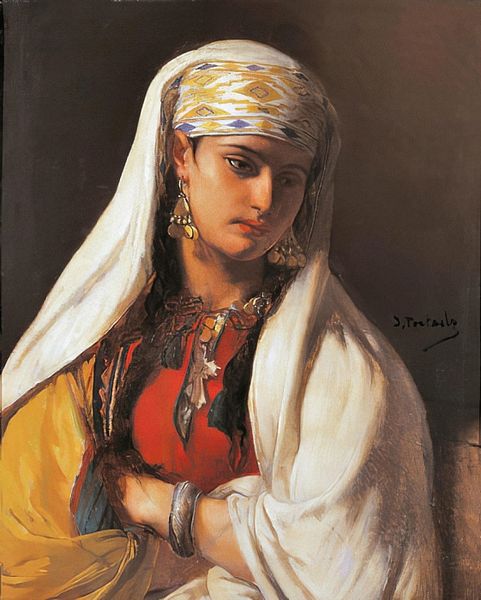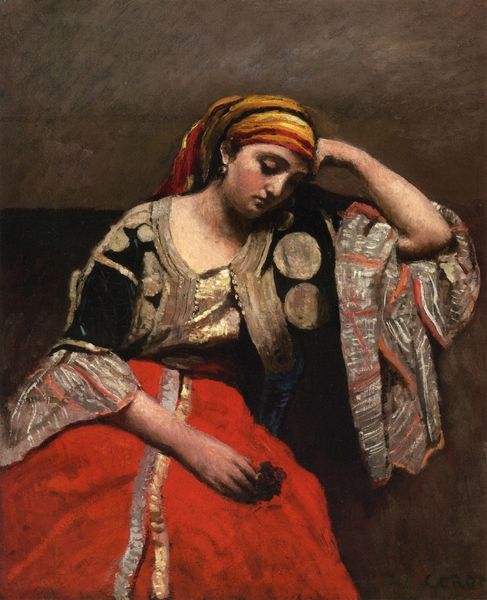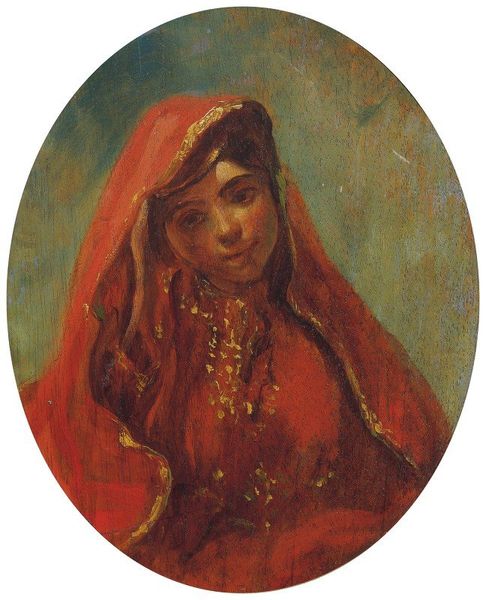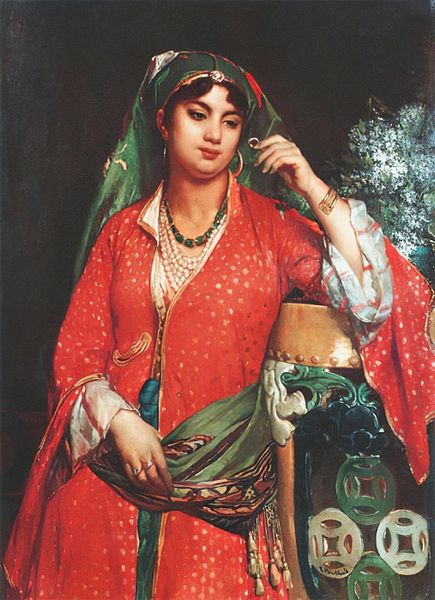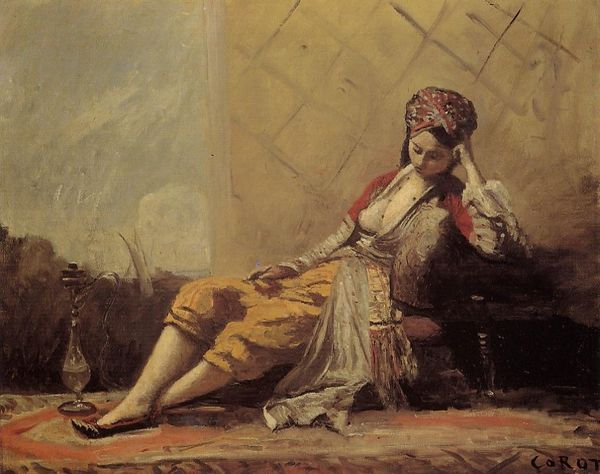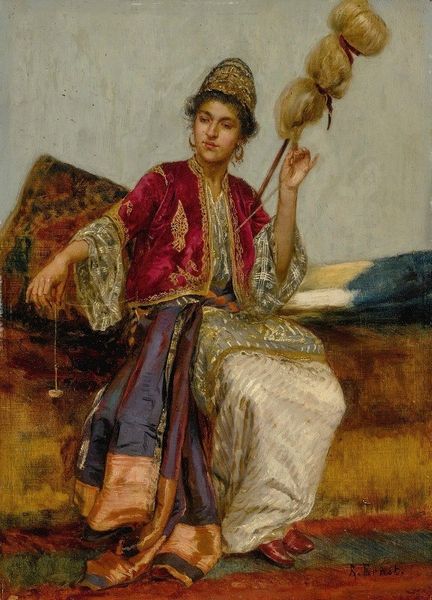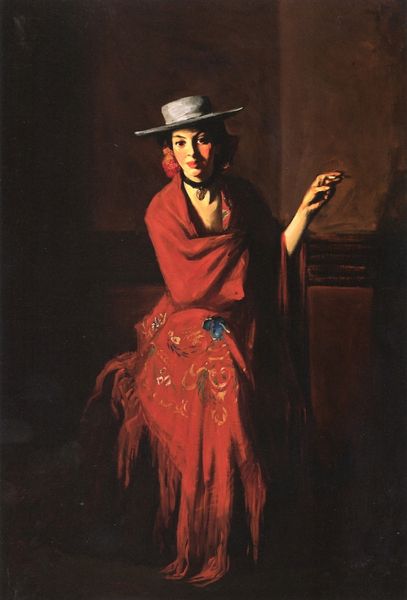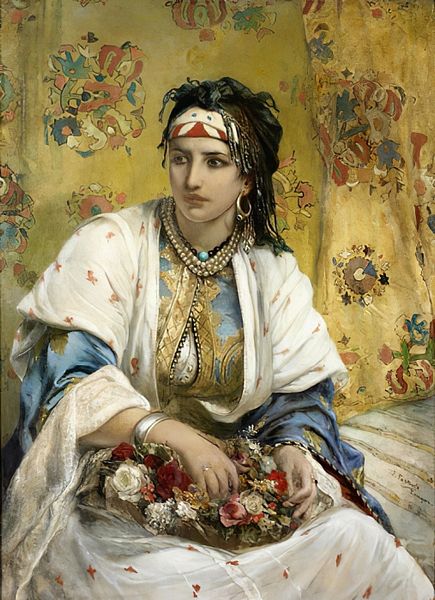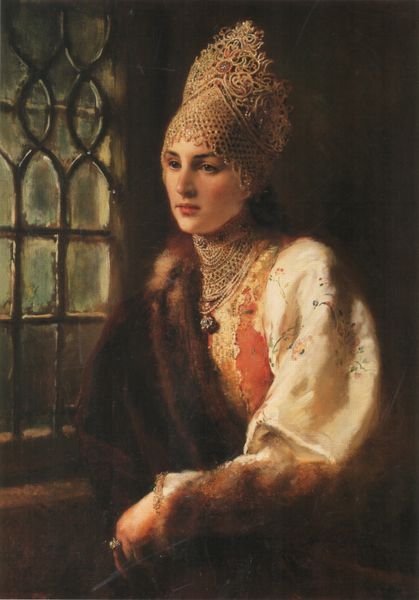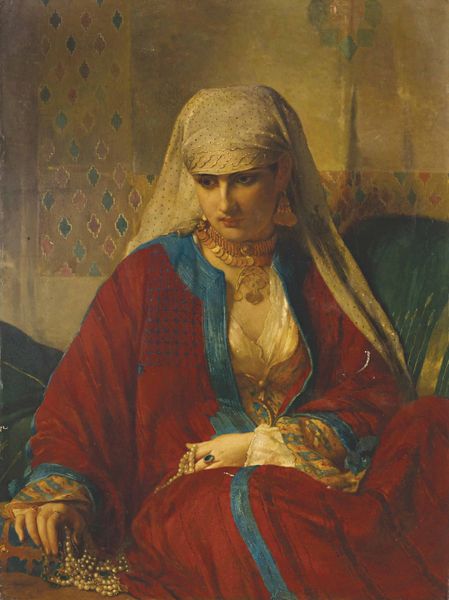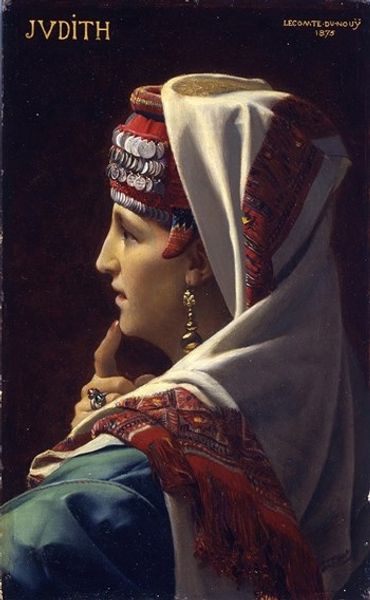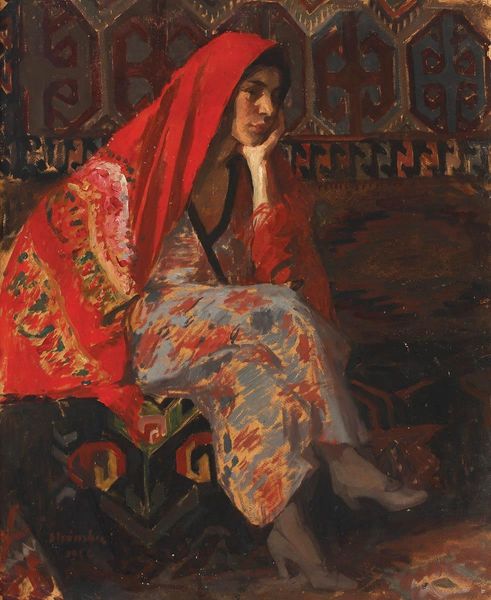
Copyright: Public domain
Curator: Here we have Clarence Gagnon's "Armenian Woman," painted in 1899 using oil paints. Editor: My immediate reaction is drawn to the vibrancy of her clothing, especially the crimson red robe. It’s striking against the more subdued background. There's also something quietly powerful in her gaze, even regal. Curator: The woman’s attire, particularly the head covering and ornamentation, speaks to cultural identity and tradition, and to a symbolic continuation of Armenian visual culture across the late 19th century. The bright gold could represent illumination and wisdom. Editor: Absolutely. Considering the historical context, especially the turbulent period the Armenian people were facing, this portrait reads as a powerful assertion of cultural pride and resilience. It counters dominant narratives of victimhood with an image of dignified strength. The choice of such intense colours in her clothing may have been deliberate. Curator: Indeed. It is thought that Clarence Gagnon, a Quebec painter, made this portrait on a European trip. And given the period's interest in Orientalism, there's potentially a degree of romanticism here. However, Gagnon treats his subject with a degree of respect and seriousness that feels distinct from the stereotypical "exotic" portrayals we often see. Editor: Agreed. I see a complex dialogue between artistic interpretation and cultural representation. Though painted by an outsider, "Armenian Woman" invites us to reflect on identity, resistance, and the power of visual representation within larger socio-political narratives. Even the somewhat softened Impressionistic brushwork seems to humanize her, rather than objectifying her. Curator: A striking encounter between artistic vision and enduring cultural symbols. Editor: And a potent reminder of art's capacity to bear witness and empower marginalized voices.
Comments
No comments
Be the first to comment and join the conversation on the ultimate creative platform.
